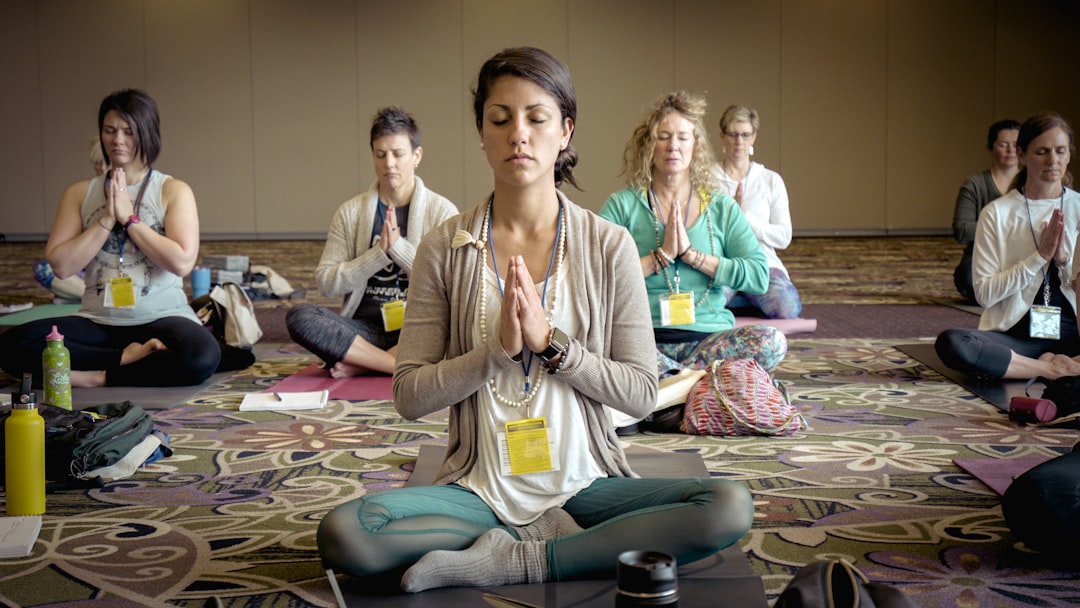
Originally posted on www.brainzmagazine.com
In the summer series I’m hosting, Healing Our Bodies After Trauma, I’m noticing my clients and students struggling with meditation. Thus, it prompted me to write this post. Meditation is often praised as a powerful tool for healing just about anything and everything. If you are anything like me, meditation or being still in silence is difficult, and thus feelings of inadequacy can get triggered. What is interesting to me, as a trauma recovery expert, is that most (not all) of my recovering clients struggle with meditation too.

For trauma survivors, sitting still and turning inward can feel overwhelming, even unsafe. While others may find peace in silence, trauma survivors can feel flooded with memories, physical sensations, and painful emotions. This blog explores why meditation is so challenging for those of us with trauma histories and how to approach meditation more gently.
The body remembers
If you haven’t read it, I recommend reading the book, “The Body Keeps The Score: Brain, Mind, and Body in the Healing of Trauma” by Dr. Bessel van der Kolk. I also recommend a newer book, “The Deepest Well: Healing the Long-Term Effects of Childhood Trauma and Adversity” by Dr. Nadine Burke Harris. Both books do an excellent job of teaching us that trauma isn’t just stored in the mind; it lives in the body. Survivors often carry tension, hypervigilance, and numbness long after the traumatic event has passed. Not only that, when triggers happen in your environment, your body responds as if the trauma is currently happening. Thus, many survivors are constantly in fight, flight, freeze, or fawn. When a survivor tries to sit quietly in meditation, the stillness can cause those buried sensations to rise to the surface. The heart may race, the chest may tighten, or flashbacks may emerge. What is calming can feel anything but calming. In fact, it may make you feel like running or doing anything but sitting still.
Feeling unsafe in silence
Many survivors grew up or lived in environments where silence wasn’t safe. It felt like the calm before the storm, or waiting for the shoe to drop. Silence may have preceded abuse or abandonment. Sitting in silence also makes you more aware of internal dialogue, which may include shame-based or self-critical thoughts. In these moments, your nervous system may interpret silence not as peaceful, but as dangerous. Makes sense, right?
Hypervigilance
Trauma can rewire the brain for survival, keeping you in a constant state of alertness. Meditation encourages letting go of control, relaxing the mind, and body. For someone used to scanning their environment for threats, this loss of control can feel terrifying. The body resists, sending signals that say, “Stay alert. Don’t relax. It’s not safe yet.” I have found this to be especially true for combat vets, sexual assault survivors, and those living with parents with unpredictable and scary behaviors.
Repressed emotions rise up
Meditation can make space for emotions to surface. While this can be helpful in the long run, it may feel overwhelming for survivors who haven’t yet built the tools or support to process the emotions or memories that come up. Old grief, anger, or fear may bubble to the surface, and without guidance, you may shut down or dissociate. I notice I want to tune out any difficult emotions that pop up by doing something on my endless to-do list.
Unrealistic expectations
Many of my clients (and I can include myself here, too, since I’m also a complex trauma survivor) assume meditation means clearing the mind or reaching a state of bliss. When trauma survivors struggle to quiet their thoughts or feel worse instead of better, they may believe they're “doing it wrong.” This can lead to shame or self-blame, reinforcing old trauma wounds. No wonder we avoid meditating! None of us likes to be reminded of our limitations or feel worse. Should you stop trying to meditate?
What can help? Let’s slowly figure this out together
If you’re a trauma survivor who has struggled with meditation, know this: you are not alone, and there’s nothing wrong with you. Your body is doing its best to protect you.
Here are a few gentle alternatives:
Start with movement-based practices like walking meditation, yoga, or tai chi. Sometimes you need to start small before going big. Make this okay!
- Focus on grounding techniques, feel your feet on the floor, hold a warm mug, or use a weighted blanket. Try calming your nervous system by taking a few breaths before meditation. Also, try dumping out your thoughts, resistance, and your to-do list on a piece of paper.
- Try guided meditations on YouTube or an app. Are you triggered by certain voices? Try another. Find a voice that calms you.
- Use your senses to stay in the present, smelling essential oils, listening to calming music, or holding a favorite object. Maybe try a weighted blanket.
- Work with a therapist trained in somatic or trauma-focused therapies who can help you build capacity. A good therapist will be patient with you and support you in not giving up. Why not give up? The benefits of meditation on holistic health are endless. Please keep trying.
Please remember, healing is not about forcing yourself to be still. It’s about finding safety inside your body again, one breath, one moment at a time. Give up the idea of doing it perfectly and just do it.
Curious about learning more to calm your body? Consider my summer series: Healing Our Bodies After Trauma. Replays are available, and the series is offered every summer.



